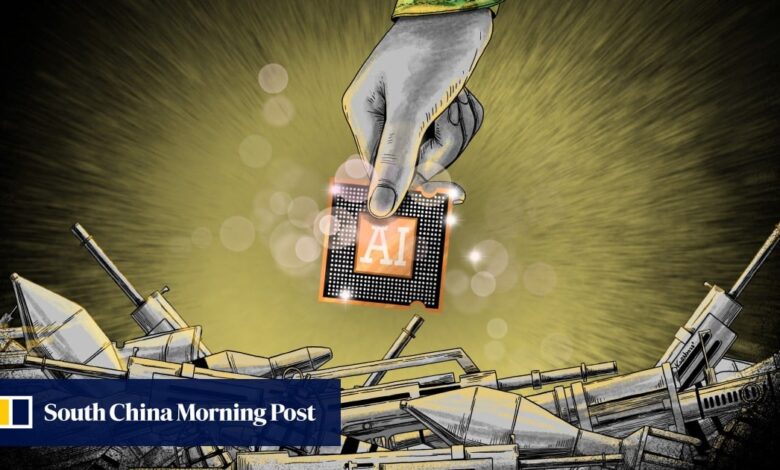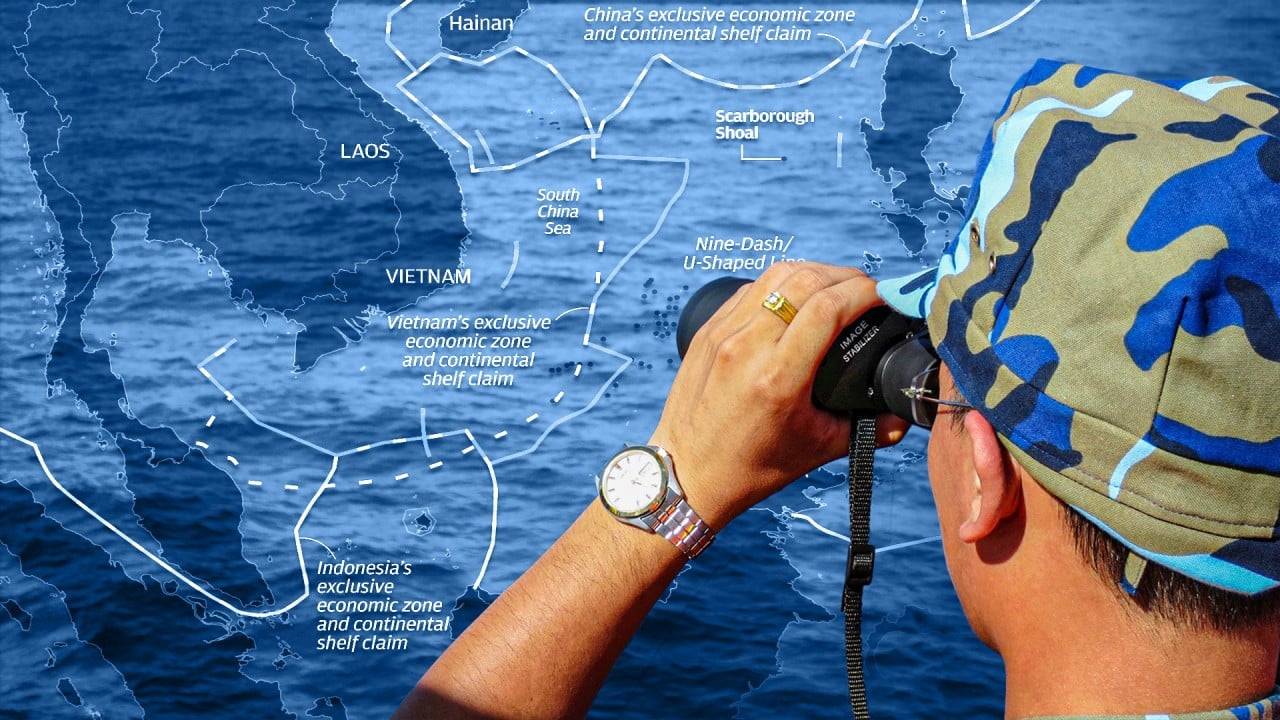When China’s military lagged behind US, it pursued an ‘assassin’s mace’ tactic. Smart weaponry and AI is changing that

But the concept of individual and specific weapons for use in asymmetrical warfare – in which one side is perceived to be far stronger than the other – may have fallen out of favour in Beijing, particularly since the Chinese military has developed more sophisticated mechanisms and logistics and in an era of smart armaments.
The United States is also paying attention to the shift in focus. US officials say their country must harness the power of American industry to compete against Beijing in these general-purpose, cutting-edge military technologies.
Like China, the US sees technology as a way to shape the parameters of a potential war between the two powers.
“I think both sides see it this way: whoever designs the best systems is going to have the advantage,” said Sam Bresnick, a research fellow at Georgetown University’s Centre for Security and Emerging Technology.
“Right now, I see the competition is based on who is going to develop the best sort of AI-enabled military systems going forward, and that’s why they have so much investment in terms of money and other resources.”
US deputy defence secretary Kathleen Hicks said the Replicator programme sought to overcome China’s advantage of having more weapons and more people, and that these autonomous vehicles would be “attritable”, referring to attrition warfare and the goal of wearing down the adversary.
She said the US advantage was the “ability to innovate, change the game and, in the military sphere, to imagine, create and master the future character of warfare”.
Robotics, machine learning and cloud computing with AI applied to them were also “routinely training” US troops deployed throughout the Asia-Pacific, said Charles Flynn, the US army commanding general in the Pacific, at a Hudson Institute think tank event last month.
China’s military AI advances likely to raise risk of US armed conflict: report
China’s military AI advances likely to raise risk of US armed conflict: report
China’s focus on versatile weapons and equipment, such as autonomous vehicles and AI-equipped weapons, is in contrast to the attention it had placed on individual assassin’s mace weapons.
The PLA’s strategy focused on developing these trump-card weapons under Jiang Zemin, who commanded the military from 1989 to 2005. In June 1991, months after the Gulf war and amid the collapse of the Soviet bloc, Jiang told a seminar that China needed to self-develop assassin’s mace weaponry to stand any chance against a powerful opponent.
The assassin’s mace has become less prominent in the speeches and writing of the Chinese leadership since Jiang’s time. His successor, Hu Jintao, rarely mentioned the concept, while Xi Jinping last spoke of the PLA’s need to develop assassin’s maces at a 2014 military equipment conference. Xi’s other mentions of an assassin’s mace referred to supply chain self-reliance and civilian technologies, such as high-speed rail and electric cars.
“It’s no longer 20 or 30 years ago, when China was more reliant on the so-called assassin’s maces because our weapon and equipment systems were not fully mature,” said Song Zhongping, a retired PLA instructor.
“We now focus more on building up our overall weapons system, which includes mobilisation mechanisms, logistical mechanisms, military industrial production, and so on. In addition to personnel development, these add up to a meaningful equipment support system. That’s what we need to emphasise, not a particular assassin’s mace.”
Ni Lexiong, a Shanghai-based military analyst and former politics professor at the Shanghai University of Political Science and Law, said major weapons should no longer be built without adequate support on the battlefield.
“The Russo-Ukrainian war has turned many of the military principles derived from the Gulf War upside down. Large-scale weapons on land, sea and in the air should not be built when battlefield defensive capabilities are seriously lacking, lest they become target practice for the enemy,” Ni said.
Both involve Beijing seeking to claim disputed territories. The US is determined to counter Beijing’s military sorties and confrontations to assert those claims, which Washington sees as belligerent and stoking tensions in Asia.
“For example, if Beijing wishes to tackle the Taiwan issue, it has to realise [there is] a high chance of confronting the US military,” Ni said.
“To fight against the US, it needs to surpass its military. To surpass the US military, Beijing needs to learn the fundamentals of the US military: first imitate, then manufacture the imitation, and lastly surpass it.”
Beijing sees Taiwan as a breakaway province to be united with mainland China, by force if necessary. Most countries, including the US, do not recognise Taiwan as an independent state but Washington opposes any attempt by Beijing to take the island by force.
Beijing also lays claim to reefs and artificial islands in the South China Sea, which is disputed by others, including Taiwan, Vietnam, the Philippines, Malaysia and Brunei.
Ni said Beijing’s development of advanced military technology was not only hindered by technical problems but also geopolitics.
Research and development of such technology in the US was not only reliant on the US itself, but a network of trusted countries, he said. For example, advanced chip manufacturing relies on a global supply chain that stretches from Taiwan to South Korea, the US and the Netherlands.
The US restricts China’s ability to leverage that global network with its extensive sanctions and secondary sanctions, made possible by the centrality of the US dollar and American financial institutions to the global economy, an advantage China lacks.
Even though the US has a geopolitical advantage, the lack of transparency over China’s development of AI-enabled military capabilities has Washington and think tanks worried.
Bresnick said: “China has put a lot of attention and resources into developing AI-enabled and emerging technology-enabled military capabilities, and this has gotten people anxious. They get very nervous because it’s very hard to measure what they’re actually doing.”
A report by the Washington-based Centre for a New American Security in July – one of at least three on China’s military AI from American think tanks since then – said the secrecy could lead to a “strategic surprise” for the US if Beijing makes a breakthrough.
Pentagon says cyberattacks are part of China’s armory for conflict with US
Pentagon says cyberattacks are part of China’s armory for conflict with US
Despite China’s decreased emphasis on having assassin’s maces in its military strategy, Bresnick said those weapons – such as the “carrier killer” missile – remained “a very important part of China’s military thinking in dealing with the US in the South and East China Sea and around Taiwan”.
“It’s still unclear when both militaries will have game-changing advantages from artificial intelligence-enabled systems. So I would say that, right now they’re like little sprinklings of AI that are coming into different military systems on both sides,” he said.
“But we know at least these carrier-killer missiles, sea mines and other assassin’s mace weapons are ready to go.”
Additional reporting by Amber Wang






